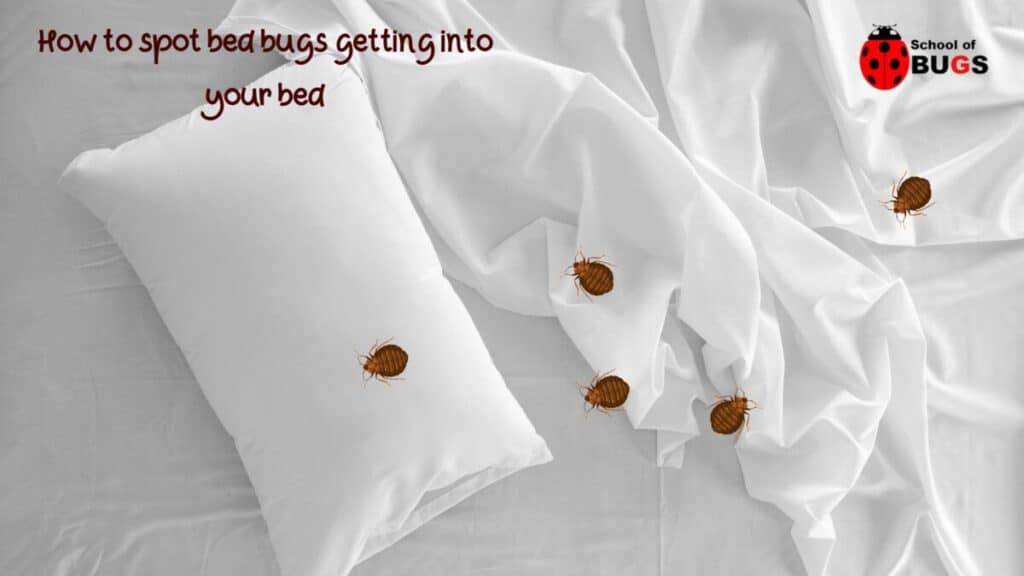
Bed bug infestations can develop incredibly fast and often right under your nose without you realizing it. Chances are, you won’t even notice them or signs of them until it’s too late, which is why you need to know how to spot bed bugs that are getting into your bed.
You can spot bed bugs by closely examining the different components of your bed – such as the linens, bed frame, etc. – as well as the walls surrounding your bed. Certain odors, bites on your skin, and other evidence can also help you to identify the creatures.
In this guide, we’ll be breaking down the following aspects of spotting bed bugs and identifying them:
- Knowing where to look to find evidence of bed bugs
- Spotting bed bugs in your bed from odors
- Spotting bed bugs in your bed from stains and residue
- Spotting bed bugs in your bed from shells
- Spotting bed bugs in your bed from eggs
- Spotting bed bugs in your bed from bites
- How to spot and identify live bed bugs in your bed
Where to Spot Bed Bugs
The first step to spotting bed bugs in your bed is knowing where to look. Bed bugs are very small and like to hide, which means you’ll find them just about anywhere big enough for them to crawl into.
Pillows and Pillowcases
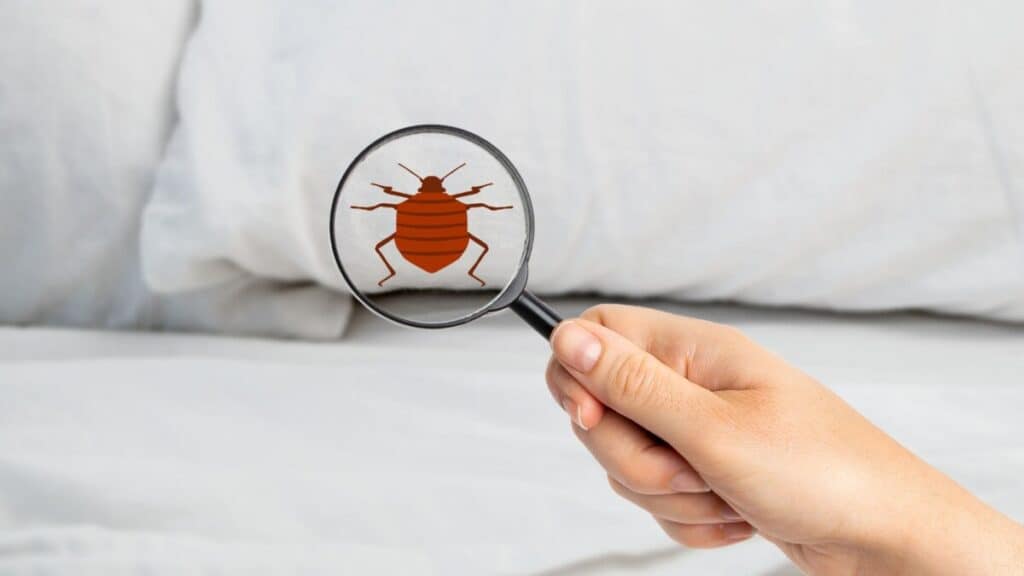
Fabrics on your bed are home to not only live bedbugs but also to the tiny eggs they lay that you might not be able to see.
Pillowcases are great hiding spots for bed bugs – especially the seams and areas of stitching that the bugs can crawl into.
Sheets
You’ll of course want to inspect your sheets – fitted and top – as well. These critters will linger in the creases and seams of the fitted sheet and beneath the top sheet when they aren’t feeding.
You can tell if your sheets are infested by looking for certain colored stains and residue left behind by the bugs.
Bedding and Blankets
Just as pillowcases and sheets trap bed bugs, your blankets, quilts, duvets, and comforters can all be home to tons of bed bugs.
Again, you can usually visually identify them based on stains, the presence of live bugs, or even odors.
In particular, beneath a heavy comforter that creates warmer conditions (65-85 degrees F), a bed bug can thrive and lay eggs. However, ironically, when temperatures get too high (113+ degrees F), bed bugs can’t survive.
Box Springs
Sometimes, the material that covers a box spring will be an ideal place for bed bugs to take up residence. Not all beds have box springs, but if yours does, it’s yet another place you need to inspect for signs of the bugs.
You should inspect the fabric the box spring is made of specifically, as well as the areas beneath the fabric where it is fastened to the box.
Mattresses and Mattress Covers
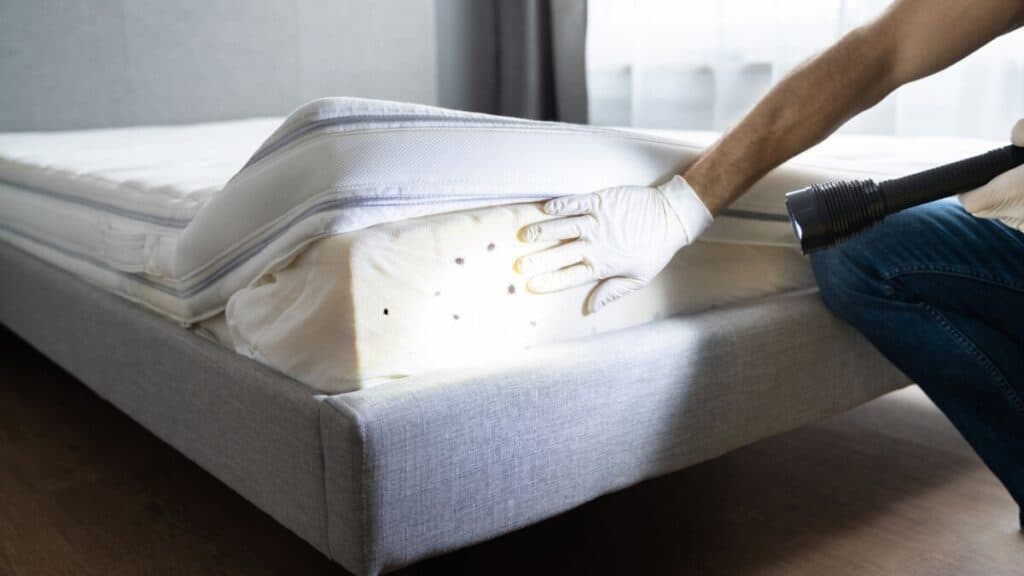
Of course, checking your mattress is one of the most straightforward ways to find out if bed bugs are getting in your bed. Mattresses are textured and have thick seams that bed bugs love to crawl into.
Your mattress is also warmer than the rest of your bed because it’s insulated with all of the bedding above it. Thus, bed bugs will flock there.
Your Clothing
Yes, your clothing can also be a bed bug hot spot, and the creatures can even lay eggs there. For the same reasons that bed bugs like bedding fabric, they like clothing fabric, too.
Inspecting your pajamas, socks, and other garments for the presence of live bed bugs, shells, and eggs is just as important as checking the bed.
Bed Screws and Cracks
Wood is another bed bug hotspot on a bed. If your bed is constructed from wood, you should be sure to inspect scuffs, scratches, and cracks in the surface.
You can also look at corners where pieces meet and the screw heads in the construction. These are all viable hiding spots for bed bugs and their eggs.
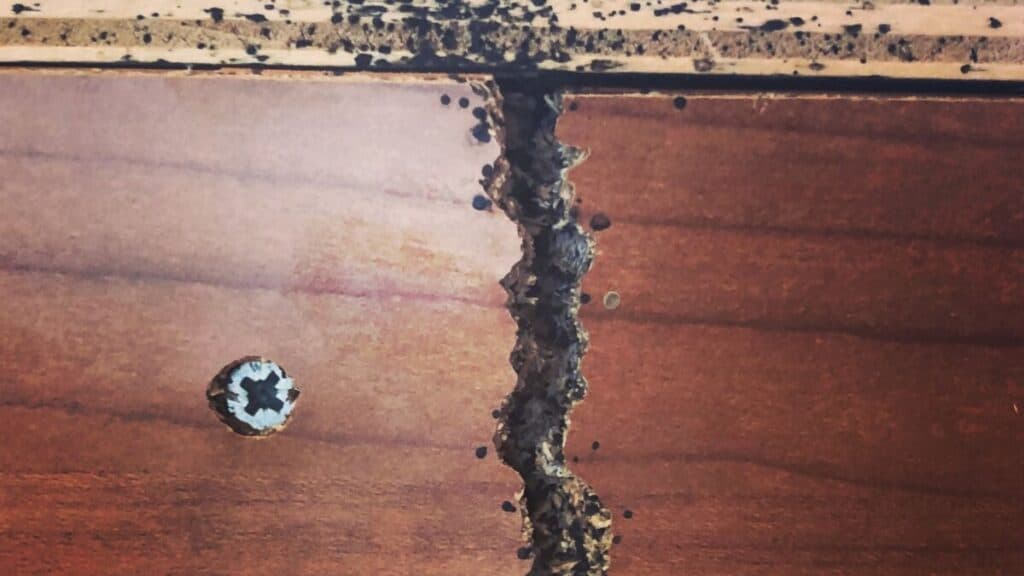
The Walls
Last but not least, be sure to take a good look at the wall surrounding your bed, including any outlets or light switches nearby.
Cracks, such as where the wall meets the baseboard, are often big enough for bed bugs to crawl into. You’ll also find the creatures surrounding fixtures attached to the wall with screws.
Spotting Bed Bugs From Smells
While most people expect to find out about bed bugs as soon as they get bit or by seeing them with the naked eye, odors are important, too.
You can actually identify the presence of bed bugs – sometimes before you see them. This is because they have scent glands that let off odors when they’re crushed.
You should pay attention to foul smells in or near your bed, especially odors that have a musty characteristic to them.

Some people even describe this odor as slightly sweet at times. If you aren’t sure, you can identify odors, in combination with other signs of bed bugs like stains and residue, to spot the bugs.
Since bed bugs leave their excrement in the areas they traverse and infest, you’ll likely smell foul odors from that, as well.
Keep in mind that not everyone will have a sense of smell keen enough to detect this odor, so it’s important to use other bed bug detection methods too.
Spotting Bed Bugs From Stains
Using your sight is one of the most reliable ways to detect bed bugs in your bed. Because these creatures leave such a visible trail behind, it’s pretty easy to see where they’ve been.
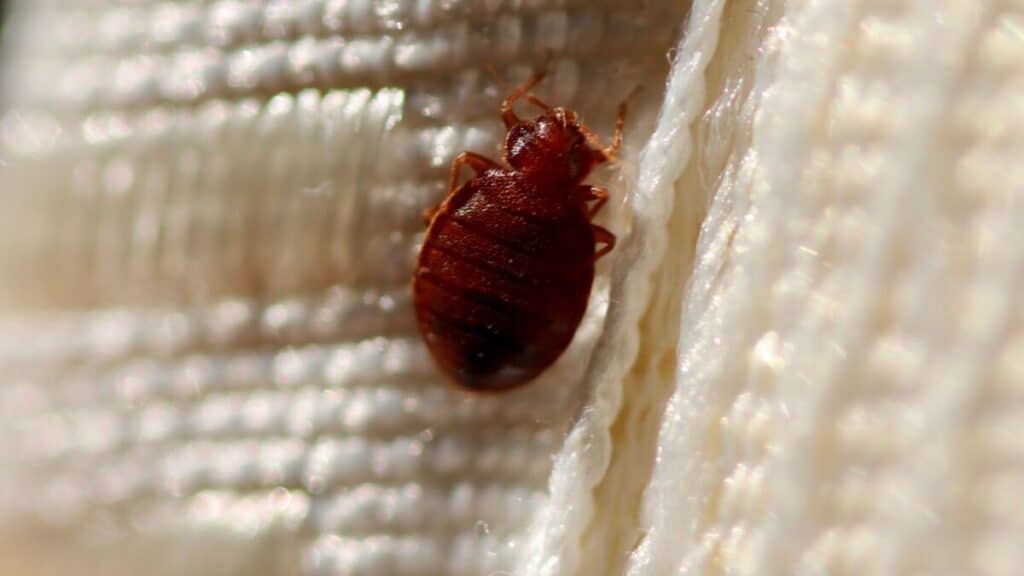
Most notably, you want to look for stains in your bedding – from the pillowcases to the sheets, mattress, mattress protector, blankets, etc.
These stains are often reddish in color or reddish brown because they are from bed bug excrement. This excrement actually contains the blood that the bugs feed off from humans and other mammals. This is why some people will describe bed bug stains as “rusty” or “oxidized”.
Note, however, that this shouldn’t be a standalone way of spotting bed bugs since the creatures can go months without feeding on blood.
Chances are, they might be living in your bed with no stains left behind for a while, leaving you clueless.
Spotting Bed Bugs From Residue
One sign that your bed might be infested with bed bugs is if it starts to seem dirty – especially when you’ve just washed your bedding.
Bed bugs leave behind their excrement, and they also track around tiny bits of dirt and debris from taking up residence in your bed.
Chances are, the stains from residue will be small and may not even be larger than one millimeter in diameter.
But they’ll often present as dots or small circles that kind of look like a tiny blood stain – especially on mattresses and sheets.
Spotting Bed Bugs From Shells
There’s another piece of evidence that bed bugs are notorious for leaving behind – their shells. In particular, the shells belong to the eggs that bed bugs lay when they mate in your bed.
The eggs shed their shells when the new bed bugs are born, leaving behind debris in all of the bed bug hot spots.
Keep in mind that the egg shells are very small – usually not even as big as one millimeter – so they can be hard to see with the naked eye.
What makes it even harder to see the shells is that they’re often whitish or pale yellow. This could be especially difficult to see on white sheets or white pillowcases.
But if you have a magnifying glass or the ability to use a brush to scrape the surface of your bedding, you might be able to lift these shells and identify them.
Spotting Bed Bugs From Eggs
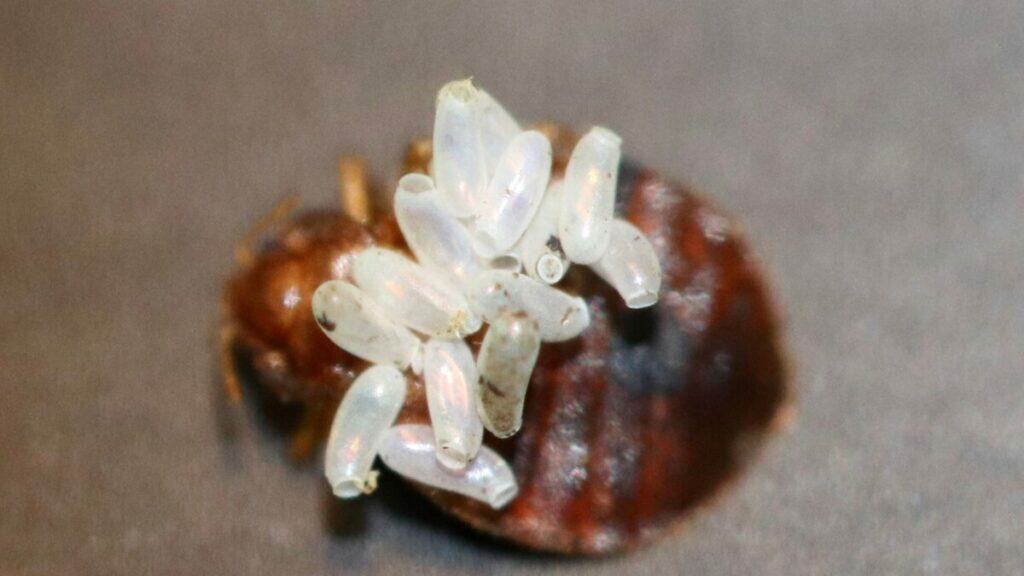
You can also just look for the bed bug eggs themselves throughout your bed and bedding. These are a sure sign that you not only have bed bugs, but that you have a lot of them (probably an infestation).
Eggs are a sign that the bugs are mating and quickly multiplying, which means the situation will soon be even harder to control.
Again, the eggs are whitish to pale yellow and extremely small. These eggs sometimes appear opaque or waxy in texture.
You may need a magnifying glass to see them up close, where they are often found together in small clusters.
Spotting Bed Bugs From Bites
And of course, you can’t forget about one of the most telling signs of bed bugs in your bed – bites. Bites appear on the skin of humans, as well as household pets if they’ve been in or around the infested bed, too.
The difficult thing about detecting bed bugs this way is that you often don’t see or experience the symptoms of bed bug bites until days or weeks after getting bitten.
Sometimes, it can take up to 14 days to see a bite appear on your skin, and some individuals who aren’t allergic or sensitive to the bugs don’t even notice.
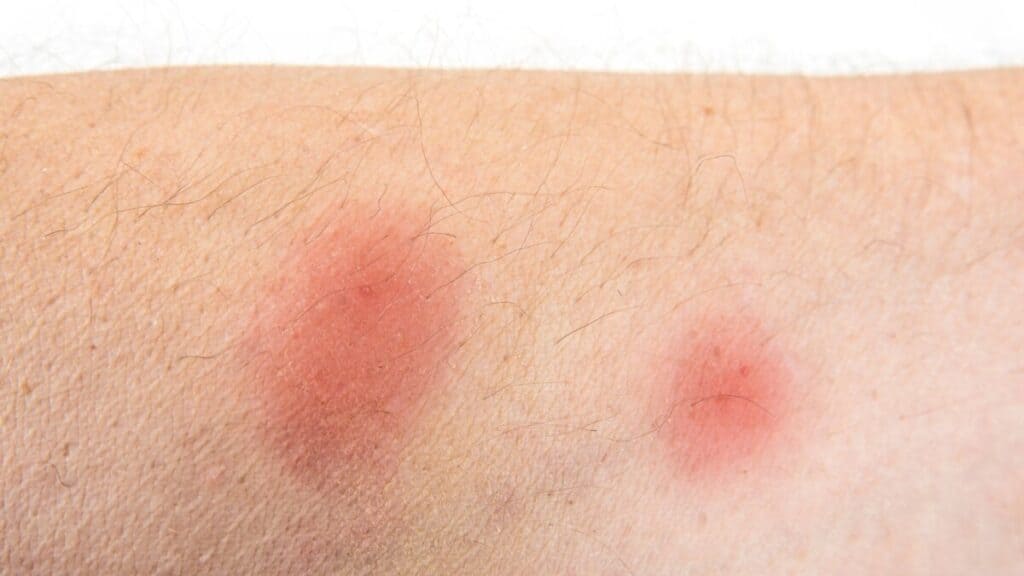
Bed bug bites appear on the skin similar to the way that skin rashes appear – small pinkish-red bumps that may itch or feel irritated.
You shouldn’t rely on this indicator alone to confirm whether or not you have bed bugs. At that point, the creatures could have already laid eggs and multiplied.
Identifying Live Bed Bugs
Last but not least, seeing live bed bugs with your own eyes is tried and true proof that they’re present. But you’re probably wondering what they look like and how to distinguish them from other bugs that could also be present in or near your bed.
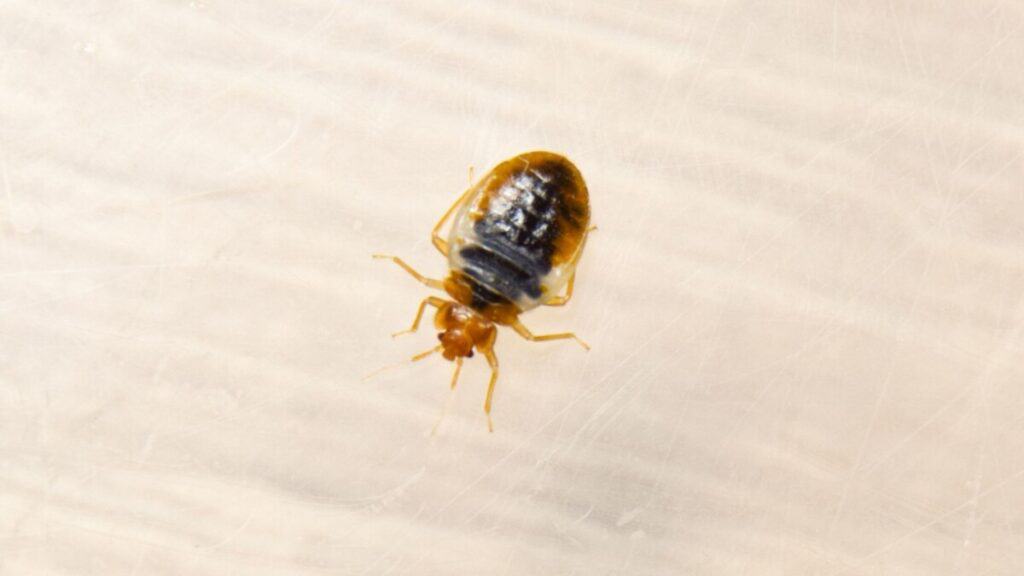
Bed bugs have a signature look with the following features:
- Can be as large as an apple seed when they reach maturity (1-7 mm on average)
- Rusty or reddish brown in color
- Pale or whitish-yellow in color if immature
- Oval-shaped body with 6 legs near the head
- Stripes across the back
Conclusion
If you’ve been wondering how to spot bed bugs getting into your bed, hopefully, this guide has helped. You can spot these creatures with your eyes, looking for shells, excrement, and other residue left behind.
You can also detect bed bugs by looking for their eggs or the live bugs themselves. And of course, inspecting for their odor is a good sign, too.
Make sure to refer to our guide to help you identify the presence of bed bugs so that you don’t have to wait until you get bit by one to find out.
Alright, that’s it for this article, here are a few hand-selected articles that you might also find interesting reads:
How Many Bed Bugs Are in a Bed – 3 Different ScenariosTiny brown bugs in bed – Everything you need to know!
Does Roach Spray Kill Bedbugs? The Quick Answer
Recent Posts
Tiny Black Bugs in Bathroom NO WINGS: What They Are and What to Do!
Finding tiny black bugs in your bathroom can be uncomfortable, to say the least. Especially if they are persistent, or they appear in very large numbers, which they often like to do. When it...
Tiny Black Bugs in Plant Soil - What Are They & What To Do About It
A short horror story: You get a new houseplant. You do your best to take care of it. You’ve ensured that it has the right soil, the right amount of sun, it gets enough water. And then one day, you...

